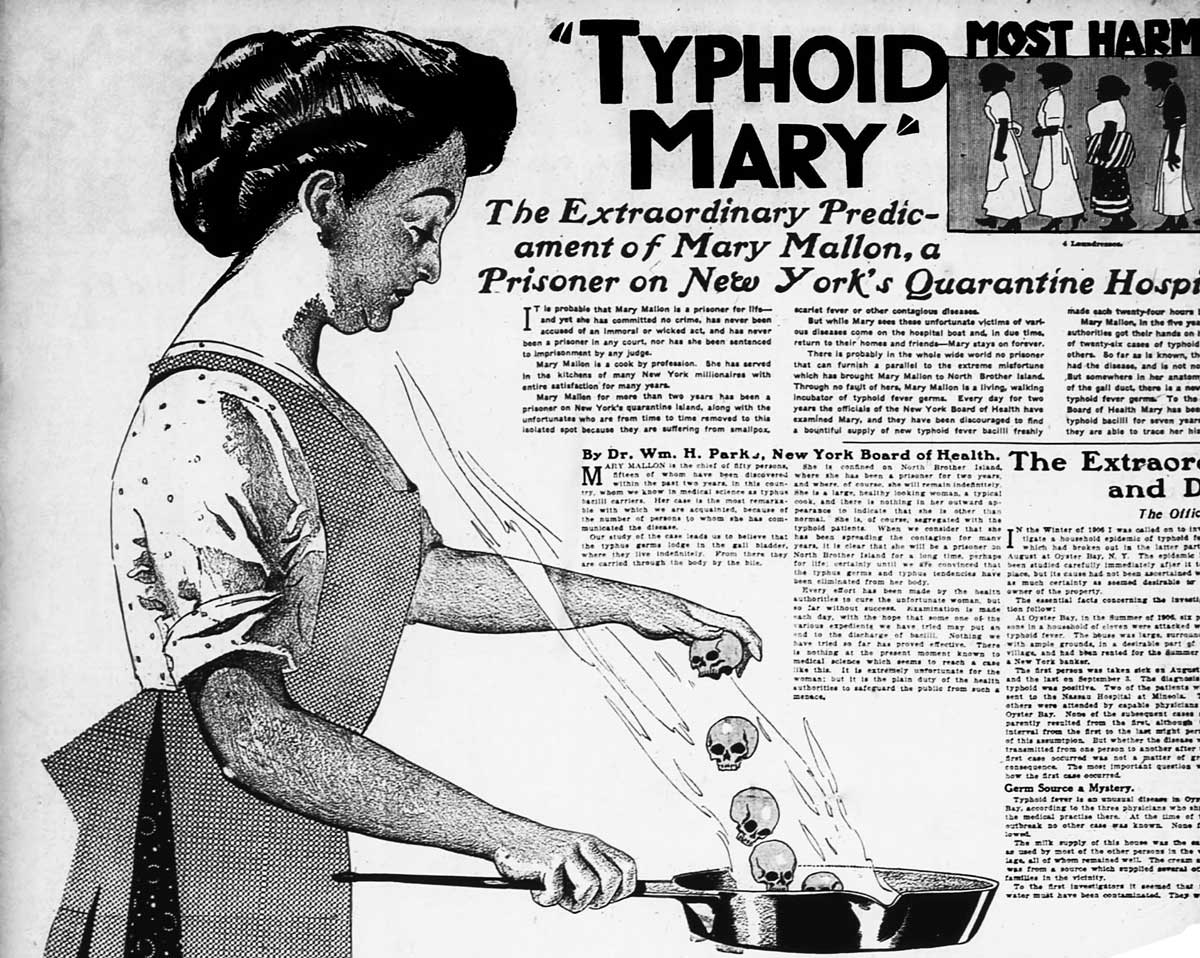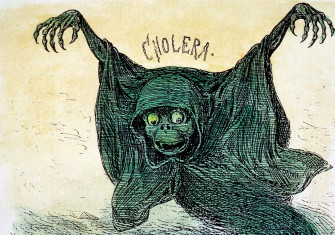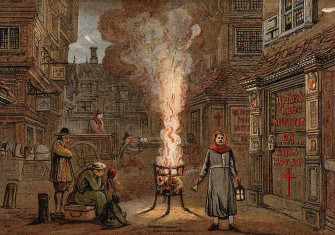Birth of ‘Typhoid Mary’
The infamous Mary Mallon was born on 23 September 1869.

The way George Soper told it, it might have been a case for Sherlock Holmes. ‘The typhoid epidemic that broke out in the summer home of Mr George Thompson at Oyster Bay was a puzzling affair’, he told the New York Times. It was 1906 and typhoid was rampant in the city; nearly 700 died that year. Soper, a sanitary engineer, was hired to track down the source of this outbreak; he zeroed in on the household’s cook. She must carry the infection, he deduced, while herself being immune – then a novel concept in epidemiology.
The cook in question was 37-year-old Mary Mallon, from Cookstown in County Tyrone, Ireland. Soper confronted her at her next job, in a kitchen on Park Avenue, and asked for samples of her urine, faeces and blood. Mallon, indignant, threw him out.
By now it was March 1907. City health official Sara Josephine Baker went to Mary’s work with three policeman and an ambulance. Mary fled. Hours later they found her, hiding behind some ash cans. ‘She came out fighting and swearing, both of which she could do with appalling efficiency and vigour’, Baker said. ‘I literally sat on her all the way to the hospital; it was like being in a cage with an angry lion.’
Tests confirmed Soper’s hypothesis. But what to do with Mary, now they knew she was infectious? She was confined to Riverside Hospital on North Brother Island in the East River. The authorities called it quarantine. Fellow patients used a different term. ‘There she is, the kidnapped woman’, they said of her. Soon she was famous – or infamous. The source of her nickname is uncertain, but it stuck.
In 1910 she was released, having promised not to cook again. She broke her promise. In 1915 there was an outbreak of typhoid in a maternity hospital. Baker recalled walking into its kitchen. ‘Sure enough there was Mary … spreading typhoid germs among mothers and babies and doctors and nurses like a destroying angel.’ She would get no second chance.
Mary Mallon, detained for 26 of her 69 years, died in 1938. How many deaths is she known to have caused? Three.






